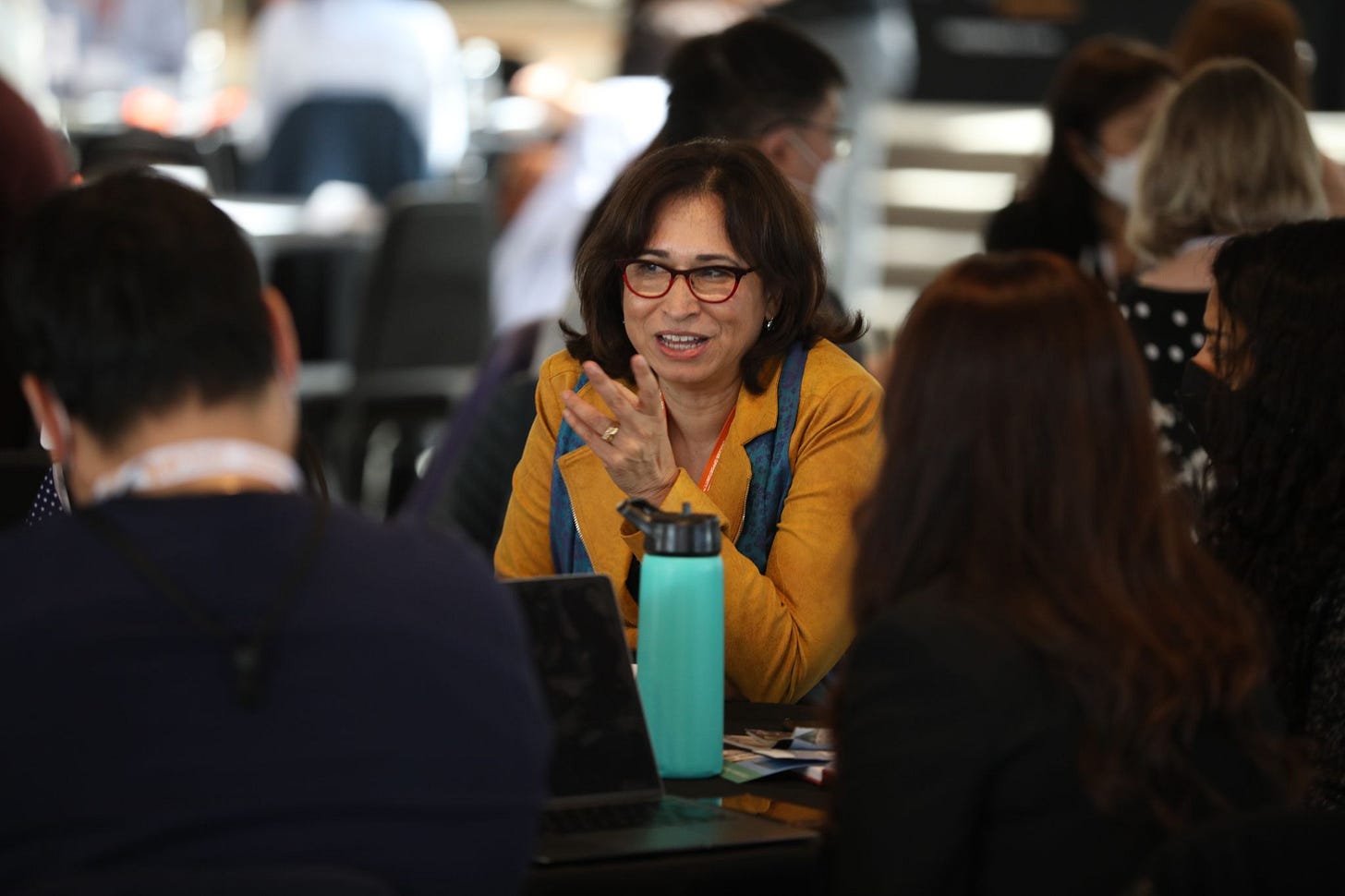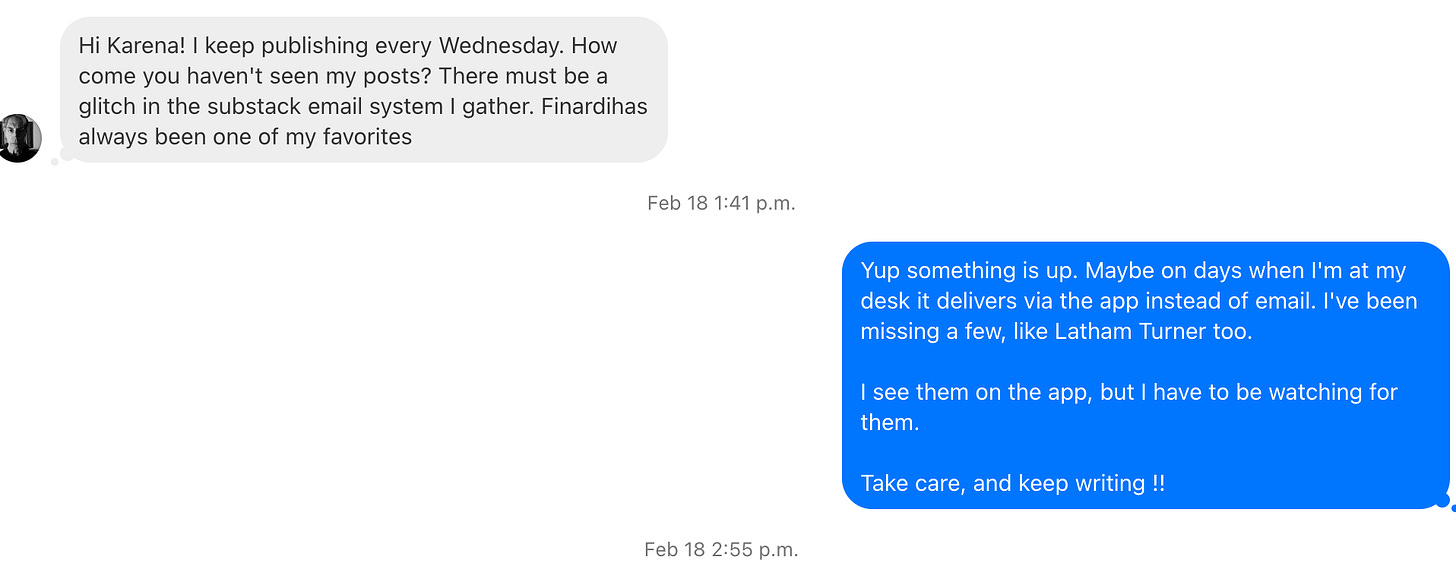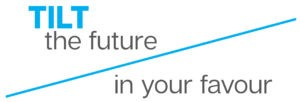A LinkedIn hack my teens used for career exploration
E187: And an PSA to rediscover those missing Substack subscriptions
“Reverse-engineering a career path. That is a really good idea.” The young career counsellor at my table at this week’s Prepskills Guidance Counsellor Day1 seemed really taken by this simple idea2. I was explaining how career exploration worked in our home with our then-tender-aged teenagers. “You should share that.”
But first:
and a
Substack PSA:
Have you been missing some of your favourite regular Substacks in your inbox? There have been some behind-the-scenes machinations at Substack. Read on for a quick fix.
It started with
huh.
Next was first discovering
’s recent post via my LinkedIn feed. Then it was finding ’s regular as clockwork post via the Substack app, rather than via my inbox.One is an outlier. Two is a cluster. Three is a trend. 3
In response to an SOS I threw out on Substack notes,
threw me a life buoy! It turns out that my desktop Substack app functions differently from my mobile app. If this is you, too … Pick the toggle switch that allows you to track your Substack subscribed posts:Bottom line, we are now back to regular programming, and my inbox is again flooded with love and interesting conversations. Thanks, too, to
, , , , , , who weighed in with their observations and suggestions.Eyes Wide Open - a LinkedIn hack
LinkedIn is a treasure trove of data points and can be used as a powerful tool to explore career paths and identify opportunities. It can tell a short story. By providing real-world trajectories it helps us understand what it takes to achieve our career goals.
When our teenaged children were exploring possible careers, we sent them to LinkedIn. We didn’t want to dissuade them from their chosen career paths, but whether it was Sports marketing agent, EB games designer, or environmental scientist, we wanted them to walk in “eyes wide open”.
What is the typical trajectory of your career path? (i.e., Is making VP one year out of your degree realistic? If not, how long does it typically take?)
Will it put food on the table? (i.e. Is this a reasonable career choice if driving a Ferrari and living in a penthouse suite aged 27 is your goal?)
What did this person have to do to get to this position? (What degree did they do? What other interests did they have that made them a suitable candidate for this position? Did they create this position or apply to it? How long did it take to get to where they are now?)
As far back as 2014 our child could search on titles like “FA sports marketing” to see how many people in those positions in Europe had attended the two degrees/universities he was ‘comparison shopping’ in Canada. Where possible, he had conversations with alumni from each program.
I believe if you are passionate about achieving a specific goal, you will ‘become like water’ finding your way around obstacles, researching alternate methods and opportunities, and doing whatever it takes to get there.
The story I shared that sparked the counsellor’s suggestion:
Our youngest child began exploring LinkedIn as he considered a career in or around the environment. Using LinkedIn, he asked critical questions like:
What environmental opportunities are available locally and globally?
Who are the largest employers in this field?
What qualifications do professionals in these roles typically have?
Through his research, he discovered that many hires at leading organizations, like the EPA, often had degrees from specific programs at specific schools. This insight motivated him to expand his employment options by preparing for the SATs and completing the Common App to apply to universities beyond Canada.
While he didn’t gain early admission to his top-choice program, he kept his focus on the ultimate goal: becoming an environmental engineer. With his application materials ready, he cast a wider net, applied to other universities and pursued a degree in Environmental Engineering. For him, the destination wasn’t a specific college — it was achieving his career aspirations.
Along the way he joined a local environmental network, launched a school environmental club (an experience that helped when he co-founded a clean energy group during his university years). Each exposure was pivotal in shaping his journey and connecting him with professionals who shared his passion for addressing environmental challenges.
This tip can be used at any stage of our careers. Reverse engineer LinkedIn profiles - you may gain valuable insights into potential trajectories, identify interesting adjacent opportunities, and potentially build connections with professionals in a career field that interests you.
BONUS: Many people were intrigued to notice a 14-year-old viewing their LinkedIn profile and would reach back to our children out of interest. They were only too pleased to share their experience and journey and offer mentorship in conversation and via email with our kids. While LinkedIn can tell the short story, only humans can share the true one.
Did you know I do presentations about the Future of Work? I will be speaking at the Etobicoke School of the Arts on Tuesday May 6. Contact me if you would like me to share my thoughts on this topic at your school, or with your organization.
"}…{`
Share your experience:
Have you ever used LinkedIn in this way? Did you reach out to university alumni while researching the degree of your choice? What were your results and discoveries?
What other data lurks ‘in plain sight’ on LinkedIn? Share some of your best hacks.
Have you ever wondered what degrees or life experiences someone had to have to be one of the first in their field to ‘do’ nanotechnology, climate risk assessment, Social Media consulting, AI prompt auditing, or food facility auditing - to do the job before a degree or certification existed for that position? These are the questions that keep me awake at night.
Hello, Tribe Tilt!
We have several new members. Welcome! You have self-selected into this powerful, wonderful group. We believe the best ideas can come from anyone, anywhere, at anytime. Please add your voice and join our conversations.
Stay healthy. From there, all else becomes possible.
Until next week …
Karena
Prepskills hosts Canadian high school guidance counsellors at an event a few times a year to learn more about the US college application system, for their students who may want athletic or academic options on the other side of the border. The US application system differs quite dramatically from the Canadian experience.
https://prepskills.com/
This simple idea is based on backcasting or reverse-engineering a process. Reverse engineering works its way backwards. Backcasting asks you to figure out what the end goal is, and what components you may be missing to convert that possibility to a reality.
Explaining how I read signals and notice trends:
Outlier-Cluster-Trend
Welcome to edition 29, fellow Tilters. Adi, EduParent Alexandra Zamora, Camilo and Philipe - it is so great to have you join our community. Today’s topic is: Trendspotting. This is another in the set of 21st-century explorer skills because we have to search for signs in the uncharted territory between the industrial and information eras.










I used LinkedIn when looking for my first job, and i found it nerve-racking! I reached about to about 100 people, to try and find a company with interesting challenges but good work-life balance (and a decent salary). I remember being so scared and intimidated, because i was bothering "real people" who probably had better things to do than talk to me.
But now that i'm an engineer in an attractive job, and on the other side of the barrier, i realize it was ok, actually. I like interacting with students and high schoolers who want to know more!
The only ones i don't reply to are the dumb idiots who don't say "hello" or who just want a referral to my company. There are a majority, sadly :/ But the rest are always so kind and curious, so it's very rewarding to help them!
Awesome on the tip the notification toggles in the settings panel. I’m gonna go check that out right now and hope it clears things up.